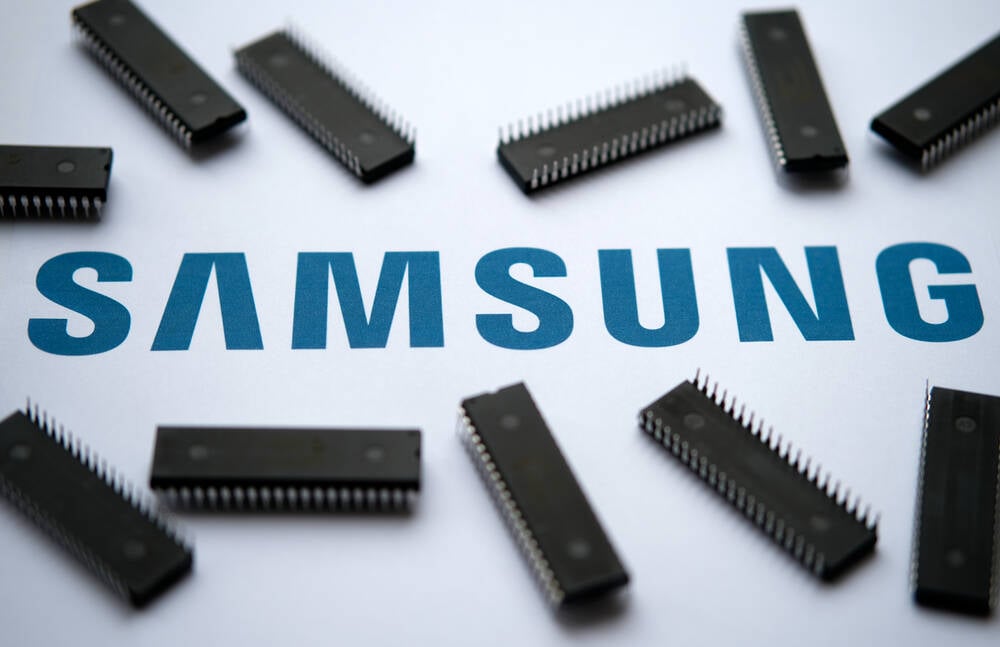Samsung To Start Mass Producing 2nm Silicon In 2025, First For Mobile Devices

Samsung Electronics will commence mass production of a 2-nanometer silicon manufacturing process in 2025, the chaebol announced on Wednesday at its annual Foundry Forum.
The company claimed its 2nm process – dubbed SF2 – "has shown a 12 percent increase in performance, a 25 percent increase in power efficiency and a five percent decrease in area" compared to its current 3nm process.
After first applying the 2nm process to silicon intended for mobile devices in 2025, the mega-manufacturer will turn its attention to chips for high performance computing applications in 2026 and then drive towards automotive semiconductors the following year.
The 2025 timeframe for 2nm production puts Samsung on par with TSMC, which plans to operate at the same scale in the same year. Intel stopped talking about nanometers a while back, but has a comparable process it calls 20A that it hopes to crank up in 2024.
It seems likely some of Samsung's 2nm output will be chiplets that can be integrated by third parties. Why else would Samsung also have announced the "MDI Alliance" – a grouping of what it described as "partner companies as well as major players in memory, substrate packaging and testing."
The alliance will form "a packaging technology ecosystem for 2.5D and 3D Heterogeneous Integration" and "provide a one-stop turnkey service to better support customers' technological innovation."
Which sounds a lot like a plan to get important players working together to make using chiplets easier.
Samsung itself stated it plans to develop custom packaging for applications including HPC and automotive.
- Broadcom squeezed Samsung, now South Korea's squeezing back – hard
- Former exec accused of trying to clone entire Samsung chip fab on Chinese soil
- Samsung's screens will check your blood pressure if the movie's too scary
- Samsung puts ChatGPT back in the box after 'code leak'
Other Samsung news from the Foundry Forum includes:
- Plans to commence foundry services for 8-inch gallium nitride (GaN) power semiconductors targeting consumer, datacenter and automotive applications, in 2025;
- Development has commenced for 5nm Radio Frequency (RF), with availability due in the first half of 2025. Samsung reckons its 5nm RF process "shows a 40 percent increase in power efficiency and a 50 percent decrease in area compared to the previous 14nm process" – qualities it suggests will make for stellar 6G kit;
- Plans to use its 8nm and 14nm RF processes to the automotive industry;
- A third production line in Pyeongtaek, Korea, will fire up in the second half of 2023;
- An under-construction fab in Texas will being operations in the second half of 2024.
Once that's all sorted, Samsung has more in store: in 2027 it plans to start mass production of silicon on an even smaller scale by kicking off mass production of its SF1.4 process, which – you guessed it! – is a 1.4nm process.
All of which probably makes 2026 and 2028 prime years for Samsung's kit to take some nice steps forward – put your correspondent down for whatever the premium Galaxy devices are called by the time these processes hit high volumes. ®
From Chip War To Cloud War: The Next Frontier In Global Tech Competition
The global chip war, characterized by intense competition among nations and corporations for supremacy in semiconductor ... Read more
The High Stakes Of Tech Regulation: Security Risks And Market Dynamics
The influence of tech giants in the global economy continues to grow, raising crucial questions about how to balance sec... Read more
The Tyranny Of Instagram Interiors: Why It's Time To Break Free From Algorithm-Driven Aesthetics
Instagram has become a dominant force in shaping interior design trends, offering a seemingly endless stream of inspirat... Read more
The Data Crunch In AI: Strategies For Sustainability
Exploring solutions to the imminent exhaustion of internet data for AI training.As the artificial intelligence (AI) indu... Read more
Google Abandons Four-Year Effort To Remove Cookies From Chrome Browser
After four years of dedicated effort, Google has decided to abandon its plan to remove third-party cookies from its Chro... Read more
LinkedIn Embraces AI And Gamification To Drive User Engagement And Revenue
In an effort to tackle slowing revenue growth and enhance user engagement, LinkedIn is turning to artificial intelligenc... Read more

